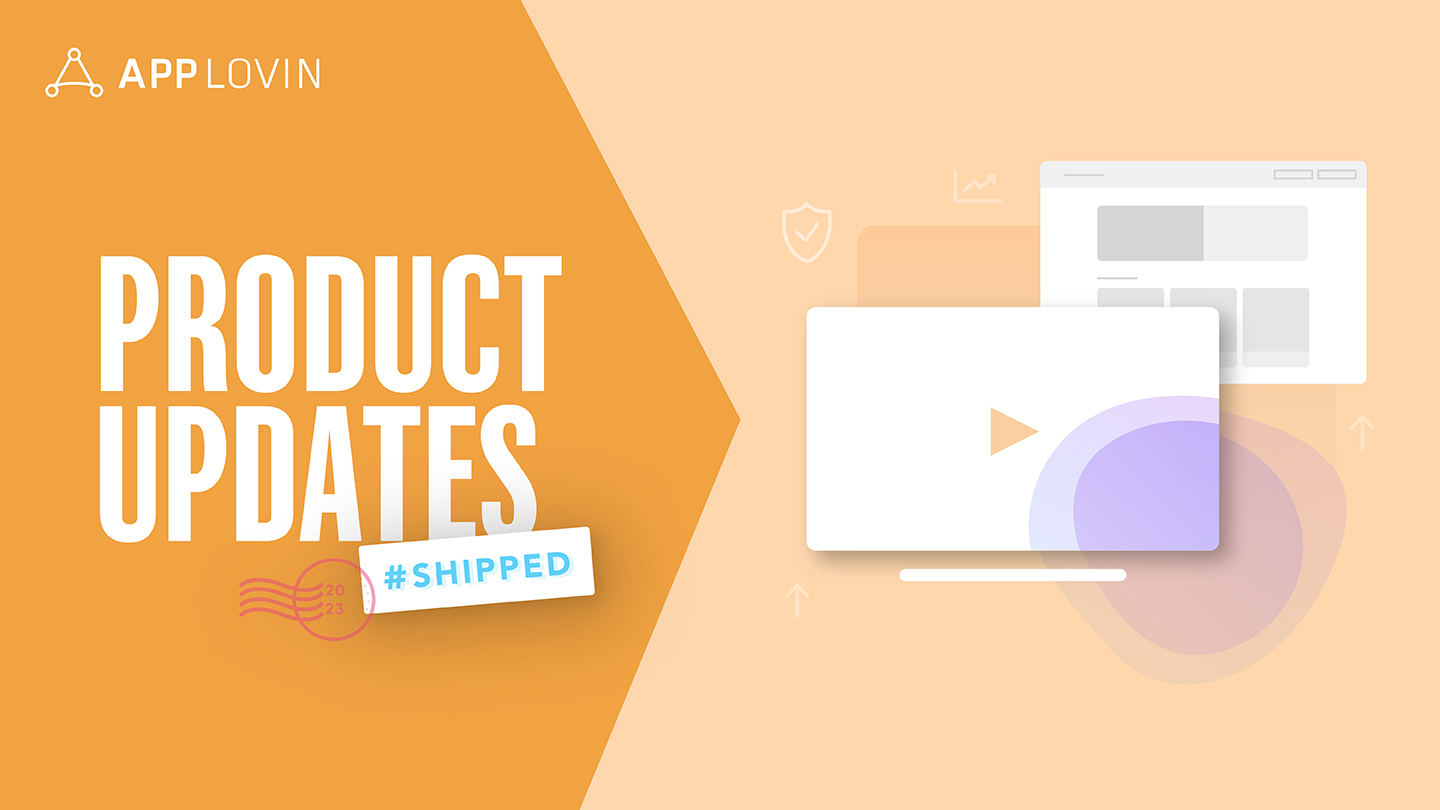Every industry has its share of jargon and abbreviations that are so casually used in articles, presentations, and more that you begin to wonder if they’re even speaking your language.
Mobile marketing is no exception and has its own mind-boggling alphabet soup of abbreviated references. So if you’d like a little help decoding all of it, we’ve compiled a list of some of the most commonly used abbreviations for mobile marketing.
(Many of these are also called KPIs, or Key Performance Indicators, and we include basic formulas for them where applicable.)
ARPDAU –– Average Revenue Per Daily Active User
ARPDAU is a KPI (Key Performance Indicator) that measures how well your monetization strategies are working on a daily basis. It tells you how much revenue your active users generate for your app on a daily basis.
ARPDAU calculates revenue from multiple sources, including in-app purchases (IAPs), ads, and subscriptions. It helps you understand your app’s daily performance and monitor the impact of promotions and events.
ARPDAU formula
ARPDAU = Revenue earned from your game in a given 24hr period / the number of active users that day.
ARPPU –– Average Revenue Per Paying User
ARPPU is a measurement used to determine the average of how much revenue is generated by paying users over a specific time period.
ARPPU formula
ARPPU = Total revenue generated in time period X / Total number of paying users in time period X
Note that looking at ARPPU as a daily value vs. a monthly value gives different results. This is because monthly ARPPU for a single user who makes multiple purchases throughout a month might not be included in the ARPPU for a single day.
ATT –– AppTracking Transparency
The (ATT) framework is Apple’s opt-in mechanism introduced with iOS 14.5 for IDFA (ID for Advertisers). This framework requires apps to ask for a user’s consent before sharing tracking or advertising related data with third parties, so IDFA is unavailable unless a user actively opts-in.
CAC –– Customer Acquisition Cost
CAC is used to understand how much it costs to acquire a customer. It is the total cost of sales and marketing to gain a new customer over a specified time. Understanding CAC helps businesses make budgeting decisions for attracting new customers.
CPA –– Cost Per Action
CPA is an advertisement measurement and pricing model, primarily used in mobile user acquisition campaigns and other performance marketing. For these campaigns, advertisers measure a specific action performed within their app –– for example, when someone registers for a newsletter, reaches a new level in a game, etc. –– and only pay for users who engage in that action.
As a pricing model, CPA is important as advertisers can set a target price to acquire new users or take other actions profitably and then build and optimize their UA campaigns towards this.
CPA formula
CPA = advertising costs / actions
CPI –– Cost Per Install
CPI is the amount app advertisers pay every time a user installs their app from their served advertisement. CPI is important because it allows you to create targeted campaigns and only pay when your app is installed.
CPI formula
CPI = Ad spend for a time period / number of new installs in same time period
Cost per install or CPI has many different dependencies, which can include geographic locations, device preferences (iOS or Android, for example)such as iOS or Android.
CPM & eCPM –– Cost Per Mille / Effective Cost Per Mille
CPM is the most commonly used online advertising payment model. It charges the buyer per mille (1000) impressions delivered within the publisher’s mobile app.
eCPM is a closely related metric that calculates how much revenue a publisher earns per 1000 impressions.
CPM is an important KPI for both game developers and advertisers because it provides a monetary value for ad inventory. This allows developers to identify what they will get paid per 1000 impressions, and advertisers to determine what they will pay per 1000 impressions.
eCPM allows publishers to identify whether the ads served within their app are effective and are generating installs.
CPM formula
CPM = Cost / impressions *1000
eCPM formula
eCPM = Total ad revenue / total ad impressions *1000
DAU –– Daily Active Users
DAU is the number of unique users that log in and start a session in an app in a 24-hour period. This includes new users who just downloaded the app and existing users who logged in.
DAU determines how many people use an app in a day and it is used to calculate retention rate and LTV (Lifetime Value).
DSP –– Demand-Side Platform
A demand side platform (DSP) manages multiple ad exchanges where digital ad inventory can be bought and sold through a single interface. Unlike traditional ad networks, DSPs automate the mobile ad-buying process and often yield stronger results for advertisers. In the mobile marketing world, this inventory lives inside of apps and is a fixture in the world of programmatic ad buying.
DSPs use real time bidding (RTB) to buy ad space. App publishers make their ad inventory available on ad exchanges through supply side platforms (SSPs).
Through the RTB process, DSPs set prices and bid on ad space as soon as it becomes available. In milliseconds, DSPs process requests for ad space, choose the best impression, bid on it, and then serve the ad in an app.
IDFA –– Identifier for Advertisers
IDFA is a unique ID assigned by Apple to a user’s device. IDFA enables advertisers to understand actions an iPhone user is taking, such as installing an app or clicking on an ad. In April 2021, Apple released iOS 14.5 and IDFA changed to user consent, meaning users need to opt-in through ATT.
IMPDAU –– Impressions Per Daily Active User
MPDAU, is used to measure how effective a monetization strategy is in terms of daily impressions. It represents the average number of ads served to each of your active users on a given day. IMPDAU is often used to do things such as test new bidding app partners, analyze conversion rates and ARPDAU, and test new game features.
IMPDAU formula
Number of daily impressions / number of daily active users
IAP –– In-App Purchases
An IAP occurs when an app user purchases an item in an app with real money. Common examples in mobile games include upgrades to speed up a task and cosmetic items for a character.
IPM –– Installs Per Mille
IPM is the number of times your app or game is installed per thousand ad impressions. IPM can be affected by many variables, including creatives, targeting strategy, supply source, and app store optimization. IPM can be a valuable tool for understanding how your user acquisition strategies are performing and whether or not they can scale for a specific app and at what price point.
IPM formula
Number of installs * 1000 / number of impressions
GAID –– Google Advertiser Identity
GAID is a device identifier for advertisers that allows them to anonymously track user ad activity on Android devices while keeping user privacy secure. It’s Google’s equivalent to Apple’s IDFA.
LAT –– Limit Ad Tracking
Limit Ad Tracking, or LAT, has been around since 2016 with iOS 10. iOS users can enable LAT to prevent IDFA from sharing their data with advertisers. LAT is fundamentally the same as ATT in that it gives users the option to restrict the sharing of their IDFA with third parties.
In iOS 14.5 and later, ATT is replacing LAT and works differently. Instead of giving users the option to disable tracking (which is on by default), LATt gives users the ability to opt-in and enable tracking (which is off by default).
LTV –– Lifetime Value
Lifetime Value (LTV) is a prediction of the profit margin earned from an average user during the entire time they use the app. LTV data helps you estimate how much revenue users will generate over time, and identify how much you can spend on user acquisition while remaining profitable.
LTV formula
LTV = ARPDAU * Lifetime (but see below)
There are many ways to calculate LTV, and some are more complex than others and require more data. One relatively simple way to measure LTV is by using ARPDAU. If you have already calculated ARPDAU and it is relatively accurate, you need to calculate the average player’s lifetime, which means looking at your retention rate and incorporating that into your calculations.
MAU –– Monthly Active Users
MAU is a high-level metric KPI that measures how many unique users use your app in a month or 30-day timeframe. Users must be unique and no user will be counted more than once in a 30-day period, regardless of usage levels.
ROAS –– Return on Ad Spend
ROAS is the amount of money a business earns back for each dollar spent on advertising. It is designed to measure how effective a business’ advertising efforts are. A higher ROAS is the goal.
ROAS formula
ROAS = total conversion value / advertising costs.
RTB –– Real Time Bidding
RTB is a programmatic ad buying process where demand-side platforms (DSPs) on the advertiser side and supply-side platforms (SSPs) on the publisher side buy and sell ad inventory. In an RTB auction, DSPs bid in real-time on ad inventory supplied by SSPs.
The process happens in only a fraction of a second.
- SSPs go through an ad exchange to make ad space available on publishers’ apps.
- SPs see these available impressions and bid on them based on the targeting criteria set by the advertisers.
- The impression goes to the advertiser with the highest bid, and their ad is served in the app.
SSP –– Supply Side Platform
SSPs are a platform for publishers to manage their inventory to sell ad space. SSPs work similarly to demand-side platforms (DSPs), but on the developer (supply) side instead of the advertiser side. DSPs use real-time bidding (RTB) to find the best ad placements at the best prices based on anonymized data. In an RTB auction, SSPs are the auctioneer, and DSPs are the buyer.
UA –– User Acquisition
UA describes the process of acquiring users for a mobile app through marketing efforts focused on generating installs. UA is usually carried out through mobile ad networks, which allows advertisers to advertise by serving in-app ads on apps from other companies, or by cross-promoting on their own apps and games.
And there you have it. More than 20 commonly used abbreviations in the mobile marketing industry. If you’d like to learn more about these and other terms, check out the AppLovin Glossary for more









